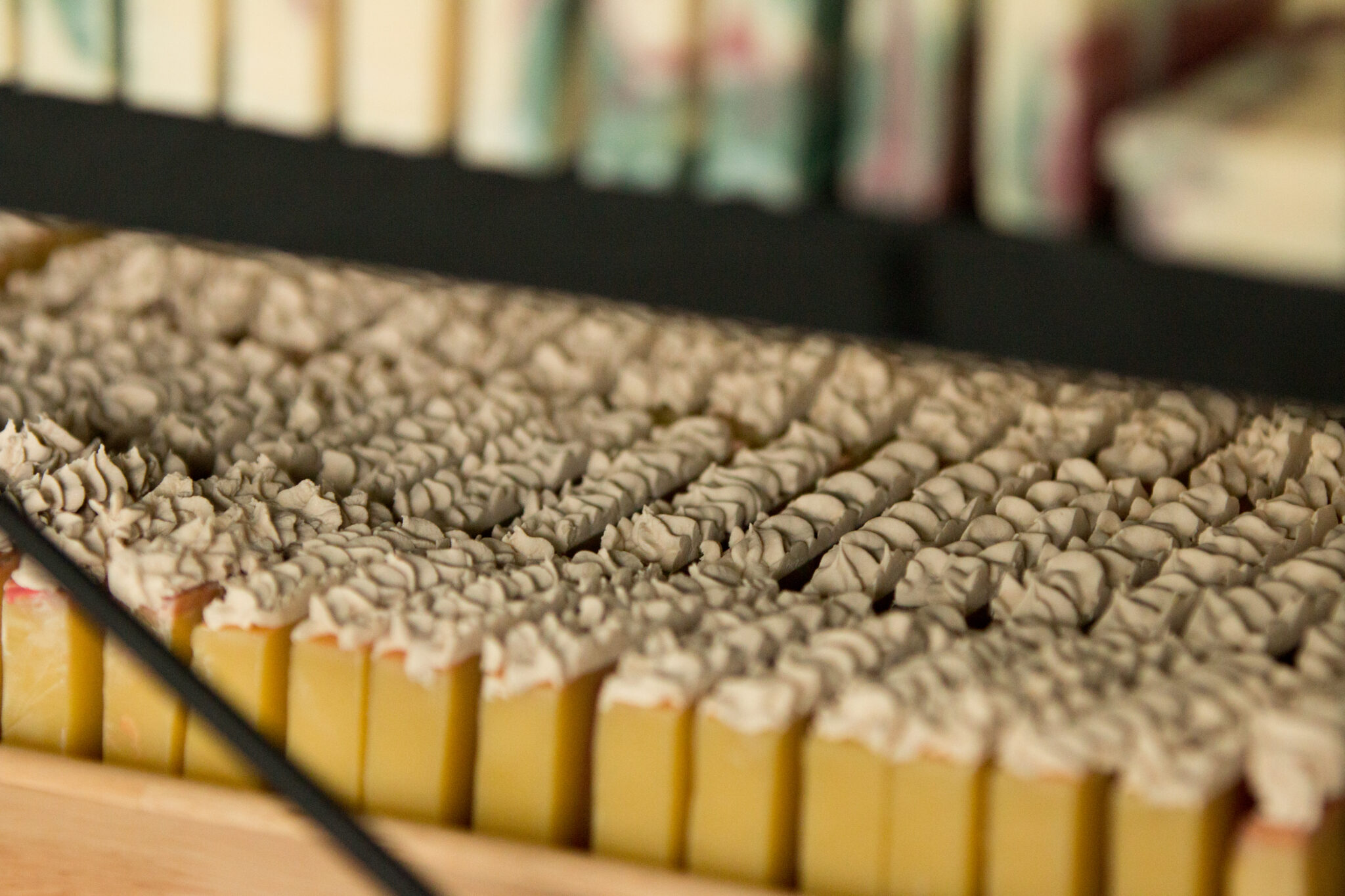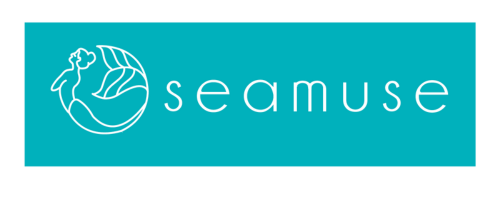Seamuse is a small family company that designs and produces top-quality, handmade natural soaps, body products, and cosmetics with great passion. Our products have a distinctive Greek character to them, exploiting the goods of our land and sea. We have started the Seamuse story more than 10 years ago, first by shyly offering our products to close friends and family then slowly feeling encouraged to bring more like-minded people into our circle.
Our History
We have started the Seamuse story more than 10 years ago, first by shyly offering our products to close friends and family then slowly feeling encouraged to bring more like-minded people into our circle.
Our Vision
Our vision has roots in our founder’s love for a good bar of handmade natural soap and her philosophy of creating products with all-natural ingredients. She brought together a hard-working team to transform her kitchen into a well-structured workshop to scale up the volumes of production without compromising quality. The end products were received with great enthusiasm from family and friends and ever since the circle grows bigger.
Our Recipes
We realized that Greece, being a Mediterranean country extending from mountain to sea, is the ideal cradle of top-quality oils, herbs, grains, roots, and resins! Why not exploit nature’s gifts and offer handmade products made from the best ingredients? After all, our country’s best assets are products of its land and sea!
So we designed our recipes trying to express what is Greece to the contemporary visitor? Emerald crystal waters, windy beaches, rocky seashores, an urchin entangled with seaweed, a ripe fig dripping syrup, sweet blood-red tomatoes, a royal watermelon, golden grape juice, and Krokos, aromatic mastic, the sweetest oranges and yogurt and honey, a superb combination. Finally, the eternal olive tree and excellent virgin olive oil are the main themes.
All of the above are not only super foods but also exquisite raw materials for our handmade soaps and lovely body products!
Our Ingredients
We always use very good quality Greek virgin olive oil which holds the highest percentage in our recipes. Our olive oil comes from the Groves of The Cultural Park of Stavros Niarchos, which is like saying it rates top-notch, natural, sustainable, pesticides free, fully organic.
We also use other oils and butters, coconut oil, almond oil, castor oil, cocoa butter, shea butter, palm oil from sustainable sources, to create different end products that will address the broad needs of our customers, or more specific ones. Tweaking the recipe will give a more cleansing or a more conditioning handmade soap.
Let’s not forget the products in the other categories, creams, lotions, body washes, shampoos, hair conditioners. They also share the same philosophy in raw material quality and natural character.
The Additives we Use
We have researched and chosen from a wide variety of ingredients that are endemic in the Mediterranean and specifically in the Greek country and seaside. Numerous herbal plants, chosen for their therapeutic and Ayurveda qualities, are added in dried form in our soaps, to enhance their natural character and enrich their lather. Krokos (Greek Safran), Nettle leaves, Chamomile and Calendula flowers, Malotira, Cretan dittany or hop marjoram, ironwort, Sideritis, mountain tea, and shepherd’s tea, thyme, sage, rosemary, hibiscus, juniper.
The mastic resin is superb in the antifungal, antimicrobial properties it adds to the soap. Some ingredients are chosen for their peeling effects, like dried oats, poppy seeds, dried thyme leaves, etc.
The coloring agents we use are natural powders like paprika, Curcuma, thyme leaves, nettle leaves, and also natural oxides. We also use pure essential oils and carefully picked fragrance oils from well-respected suppliers.
The aromatic recipes are a whole separate chapter in Seamuse. Our fragrances are custom made in the workshop and not one is a copy from a competitor or ready bought from a supplier. Let’s not forget our much, much-loved Perfumery Course!
Our Products
Our backbone product is our handmade, natural soap bars. It is a product most tricky to produce, due to the safety issues and the recipe combinations. We have invested in an intricate software program that ensures the stability and safety of our end products.
We also produce excellent liquid body washes, using the hot process method. We carry four different body washes, for sensitive skin, dry, normal, and oily skin, each with its own particular recipes and aromatics. Note, this is an all-natural liquid soap, recommended for the body, not the scalp or the face, because of its higher pH.
Next, we have the body cream to lotions line, also in the same philosophy, sensitive, dry, normal, oil skin. The scents are in the same families as the body washes.
We have been developing our natural ingredients face line, with the cleansing oil, and the face creams for sensitive, dry and normal skin types. We are still researching and developing this line.
Scaling Up
Scaling up the production of handmade soap and other handmade cosmetics like creams, shampoo, body wash, etc. is easier said than done! Equipment had to be replaced with new higher capacity items.
Rearrangements and restructure of the workshop had to be designed and implemented from the stage of raw materials storing area to higher volume and more precise scales, to larger production containers, to larger molds, to stronger cutting tools, to more curing racks, etc, etc.
What we are proud of, however, is that we did not jump to volumes that would dictate altering our handmade character, our handmade recipes. Our workshop continues to be a small-scale family business.
Keeping the boat steady
Taking production to the next level, entailed more than just increasing the volumes at all stages. We introduced and diligently follow Good Manufacturing Practices (GMP), for every raw material entering the workshop, to all batches of handmade soaps, creams, shampoos produced, tested, and shipped to customers. No compromises or shortcuts!
Testing for Safety
All batches we make have to be tested in an accredited laboratory, for stability, safety, challenging temperature conditions, microbial contamination. A tedious, yet necessary procedure for keeping quality standards high.
Our Motto
What would be our motto after these 10 years of hard work? Keep the product simple, a good well-designed formula and top-quality ingredients are all you need to make an excellent product!

Our Philosophy

The certification of the lab
Seamuse is certified by the National Agency for Medicinal Products and follows strict GMP practices in accordance with ISO 22716: 2007. All our products are notified to the European Cosmetics Platform (CPNP) and have been laboratory tested for quality assurance.
The design of the handmade soap recipe
The process begins with careful planning of the recipe (formula) of the soap. The use of special software (algorithm) ensures the correct ratio of the components. Essential oils and aromatic oils, special additives, and color combinations are also part of the design.
Our handmade soaps have a balanced combination of 7 quality oils: virgin olive oil, sweet almond oil, castor oil, cocoa butter, coconut oil, jojoba oil, and shea butter. The recipes differ in the combination and proportion of these oils. Palm oil (from suppliers that adhere to the principles of sustainability) is sometimes used in specific bars. We buy palm oil from reputable suppliers who state their sources. Each recipe is carefully designed, depending on the desired properties of the soap.
We greatly appreciate the euphoria that the perfumes that are added to the body products give. We use pure essential oils and carefully selected aromatic oils from reputable suppliers.
We also use additives for specific purposes. For example, we have a soap bar with Greek yogurt and honey, which stands out for its soothing and moisturizing properties. We also make soap from Greek Saffran and beetroot, soap with tomato and thyme, soap with poppy seeds. In each, the ingredients are added after extraction into oils or by simply adding them to the recipe.
The quantities of oil, soda, aromatics and additives are weighed carefully and accurately and then transported to the place of preparation.
The Cold Process Method, the Hot Process Method and the combination of the two for the production of handmade soaps
There are three ways for the production of our handmade soaps: The Cold Method, a combination of the Cold & Hot Method & the Warm Method.
In the Cold Process Method, all of the ingredients, oils, water, and soda are mixed together at room temperature. Stirring is done with a high-strength shaker until the point of light coagulation of the mixture (trace). At this point, the various herbs, dyes, and aromatics are added.
Τhe recipe that has been designed is followed according to the desired properties of the final soap and has been tested for safe use in a certified laboratory.
If we want the final soap to have two colors or three colors, the basic mixture is separated and the coloring is done in separate containers. The mixtures are then poured into a liquid form in the mold. The soap has active soda at this stage and needs a lot of care not to come in contact with bare skin. That’s why we always wear a suit, goggles, and gloves.
We choose the Hot Process method when we want to speed up the maturation process and we do not want to wait 40 days to sell the product. The production is carried out at high temperatures of 70-80 degrees Celsius and the mixture is stirred with the shaker while it is fluid.
It goes through various stages of saponification until it results in complete saponification and inactivation of caustic soda. In the form of a thick mixture, it is poured into the mold and cut into bars the next day. The hot method soap can be used immediately after cutting after the soda has been completely inactivated, but we keep it on the shelves for a few days to perfect the drying.
In some cases, we use the double method, starting with stirring at room temperature, and then the liquid mixture with the mold is placed in the oven for 8-10 hours to accelerate the completion of saponification.
Drying and pH measurement
For the next 24 hours, the soap is removed from the mold and cut into bars of 3 sizes: 140 gr, 70 gr, and 35 gr. which are placed in the drying selves. The necessary measurements are made for the pH which should be around 8.5-9.
After cutting, the soap bars are placed on shelves in a well-ventilated room for curing and drying. The climate in Greece is fortunately dry and helps in the maturation process. Cold method soaps remain in the dryer for 35-40 days and are regularly checked for final weight and alkalinity. The hot method and mixed-method soaps are kept in the dry for about a week.
Always keep a copy of the batch produced, marked with the number and date. The batch number is unique and follows the pieces until their final sale. Handmade soaps are checked for their pH value (ie alkalinity) both during the production process and at the end of the maturation period, to make sure that they are ready for use on the skin.
After being sealed, they are wrapped by hand and packed for shipment. The process is handmade at every stage from beginning to end.
The production of creamy products
During the production of creams and lotions for the body, hair, and face, a very strict procedure is followed to prevent any contamination of the materials at all stages of production and packaging. Everything is meticulously disinfected, counters, utensils, tools and containers, by spraying a germicidal solution, 94 degrees alcohol.
Creamy products should be protected from the growth of microorganisms due to their water content. The water we use in the laboratory is deionized and passed through a UV device, but prevention with the use of a preservative is necessary for the safety of the product that will be on the shelf at room temperature.



